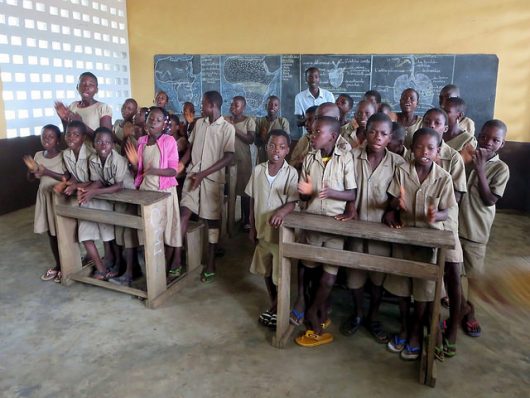Why is Togo Poor?
 Togo is a relatively small sub-Saharan nation that is situated along the Gulf of Guinea with a population of approximately 7.6 million people. A 2008 UNICEF report found that 81.2 percent of Togo’s rural population lived below the poverty line, making it one of the “world’s poorest countries.”
Togo is a relatively small sub-Saharan nation that is situated along the Gulf of Guinea with a population of approximately 7.6 million people. A 2008 UNICEF report found that 81.2 percent of Togo’s rural population lived below the poverty line, making it one of the “world’s poorest countries.”
Why is Togo poor? And what is being done to combat poverty in Togo?
Here are six factors that can help begin to answer the question “why is Togo poor?”
- The Central Intelligence Agency (CIA) World Factbook stated that the adult literacy rate in Togo is 63.7 percent, which makes it difficult for Togo to participate in the rapidly evolving global economy. Furthermore, young girls are often not able to attend schools because they are wedded off at a young age—and many families often have to sacrifice education in order to allocate money to food.
- The United Nations reported that over 100,000 people live with HIV/AIDS and nearly 68,000 children are left without families as a result—yet absent a robust healthcare system (and the appropriate resources), Togo has a difficult time responding to and controlling disease outbreaks. Life expectancy in Togo is only 65 years.
- There is widespread water insecurity. Only 63 percent of the Togolese people have access to sanitary water available for consumption often leading to the spread of waterborne diseases.
- Poor governmental infrastructure that pervades Togo often hinders foreign investment in agriculture, which accounts for a large proportion of exports. Government corruption is also prevalent which often hinders meaningful policy action and prevents democracy.
- Child labor and sexual exploitation prevent Togo from fostering a generation of youth that is equipped to participate in the global economy. Forty-seven percent of children between the ages of 5 and 14 are forced to work in agriculture which prevents them from getting an education.
- A UNICEF study found that the rate of severe malnutrition among children under the age of five exceeds 10 percent and is thus higher than the critical level determined by the World Health Organization. The same study also reported that 108 out of 1,000 children will die before their fifth birthday because of malnourishment. Inability to produce a healthy generation only serves to further answer the question “why is Togo poor?”
Despite the widespread structural poverty that pervades Togo, international organizations and non-governmental organizations have mounted an effort to alleviate poverty.
The World Bank has launched several projects in Togo focused on “macroeconomic recovery and stability, health, agriculture, education and more.” Notably, the group has built 325 primary school classrooms and provided $26.1 million for infrastructural development in impoverished communities.
The International Monetary Fund (IMF) declared Togo a beneficiary of the Heavily Indebted Poor Countries Initiative which provides debt relief as a poverty reduction strategy. In addition, the World Food Programme has provided assistance to groups affected by natural disasters and high food prices in an effort to reverse the political and economic turmoil that Togo has been confronted with.
As demonstrated by the World Bank, IMF and WFP, meaningful foreign aid and reform must be structural if it is to produce sustainable and long-lasting results.
– Hannah Ritner
Photo: Flickr
